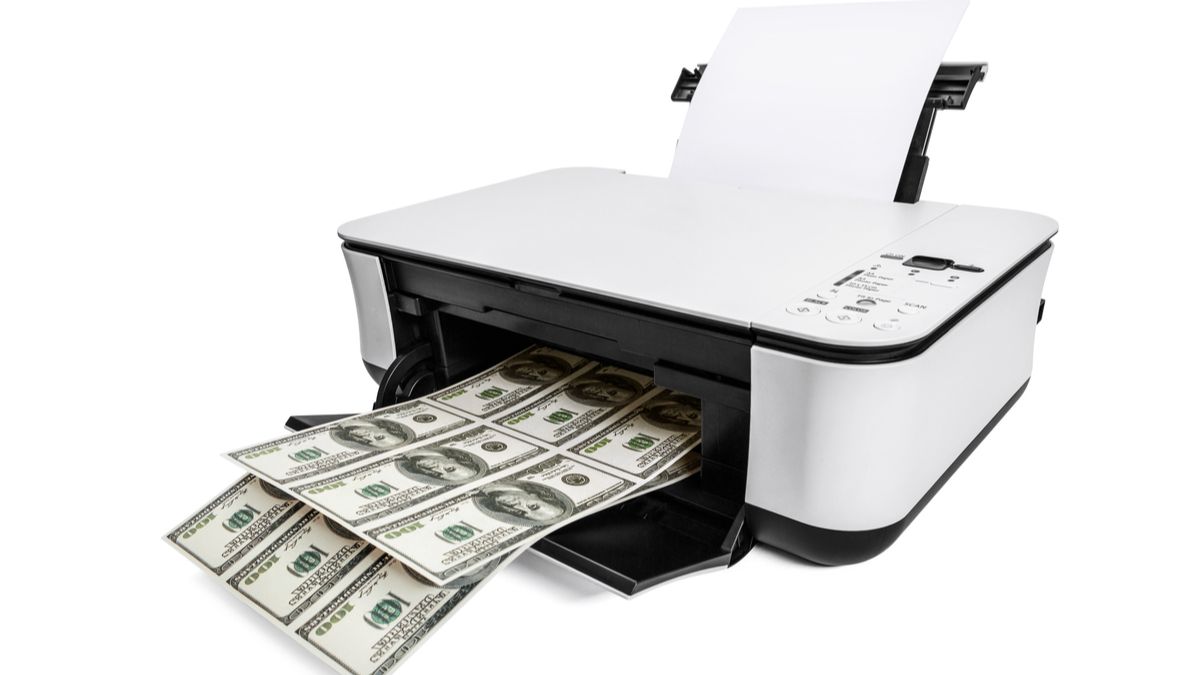Quick Links
The high cost of running and owning a printer has become part of the zeitgeist at this point. You can measure exactly how much printing costs with "cost per page," also referred to as CCP. It can help you make more informed decisions when buying printers, paper, and ink.
Why Is Cost Per Page Important?
When it comes to buying an inkjet printer, the upfront costs can sometimes be deceiving. The truth is that some manufacturers sell their printers at a loss and make up for it through the sale of printer inks. Not only that, but according to Consumer Reports, up to half of printer ink is wasted in maintenance cycles. Combine that with the high cost of the cartridges themselves, and running an Inkjet printer becomes pretty expensive.
This is why it's crucial to figure out how much you pay for every page you are printing. Even if it's a one-cent difference, over the course of a thousand pages, that starts to add up. This can be further compounded if you are in charge of printers in a small to medium enterprise (SME) where you can quickly go through a few hundred if not a thousand pages per month.
Calculating your cost per page means that you can account for the high cost of printing.
How to Calculate Cost Per Page (CPP)
Thankfully, figuring out the actual cost per page is relatively straightforward for monochrome printing:
Cartridge price / Page yield + Paper cost = Cost Per Page
Cartridge price is the price that the individual cartridge costs. Page yield tends to vary wildly from manufacturer to manufacturer, but you can often find the page yield written somewhere on the ink box or the manufacturer's website. Usually, this can range between 1,000 pages and 3,500 pages, depending on the size of the cartridge.
Finally, you have paper cost, which can be calculated by dividing the cost of the paper packet by the number of reams inside it. So, for example, for this $34.94 ream of 500 sheets, you would divide 34.94 by 500 and get a $0.069 per page. That being said, it's important to note that when you're looking at buying guides for printers and see the cost per page referenced, the cost of the paper is usually not included in the calculation.
So what does the math altogether look like? Well, let's try it out using this HP 63XL Black Ink Cartridge. It costs $39.89 and has a potential yield of 480 pages:
39.89 / 480 + 0.069 = 0.15
Therefore, if you have a printer that uses that cartridge and the A4 paper mentioned above, then you're going to have an estimated cost of 15 cents per page, which, as you can imagine, is pretty high when you start doing hundreds or thousands of pages.
One more complication: Advertised page yields are sometimes based on a very low page coverage, which means a third of a page with double-spaced text. So, if you do a lot of text-heavy printing, this number is likely to double or even triple.
Of course, there is also the color printing cost per page, which is slightly more complicated a calculation but still relatively straightforward:
(Black cartridge price / page yield) + ((Color cartridge price / page yield) x number of color cartridges) + Paper cost = Color printing cost per page
As you can see, the formula is roughly the same, with the only difference being the addition of color cartridges
Lower-cost Alternatives
If you're balking at the prices of Inkjet printers, there are a couple of alternatives you can choose instead.
For starters, there are laserjet printers, which are more expensive to buy than inkjet printers but have cheaper cartridge costs. You also lose a little bit of printing quality, especially with color, compared to inkjet printers, but that shouldn't affect you too much if you don't work professionally with printed images.
If you really do need the color quality of an inkjet, you can look at tank inkjet printers. They're essentially what they sound like, in that they don't use a cartridge. Instead, they have an internal tank that you can refill with ink as needed. Not only does this have the benefit of bringing down CPP prices to a couple of cents, but you also don't have to throw out half-full cartridges because one color has finished, making it more environmentally friendly.

